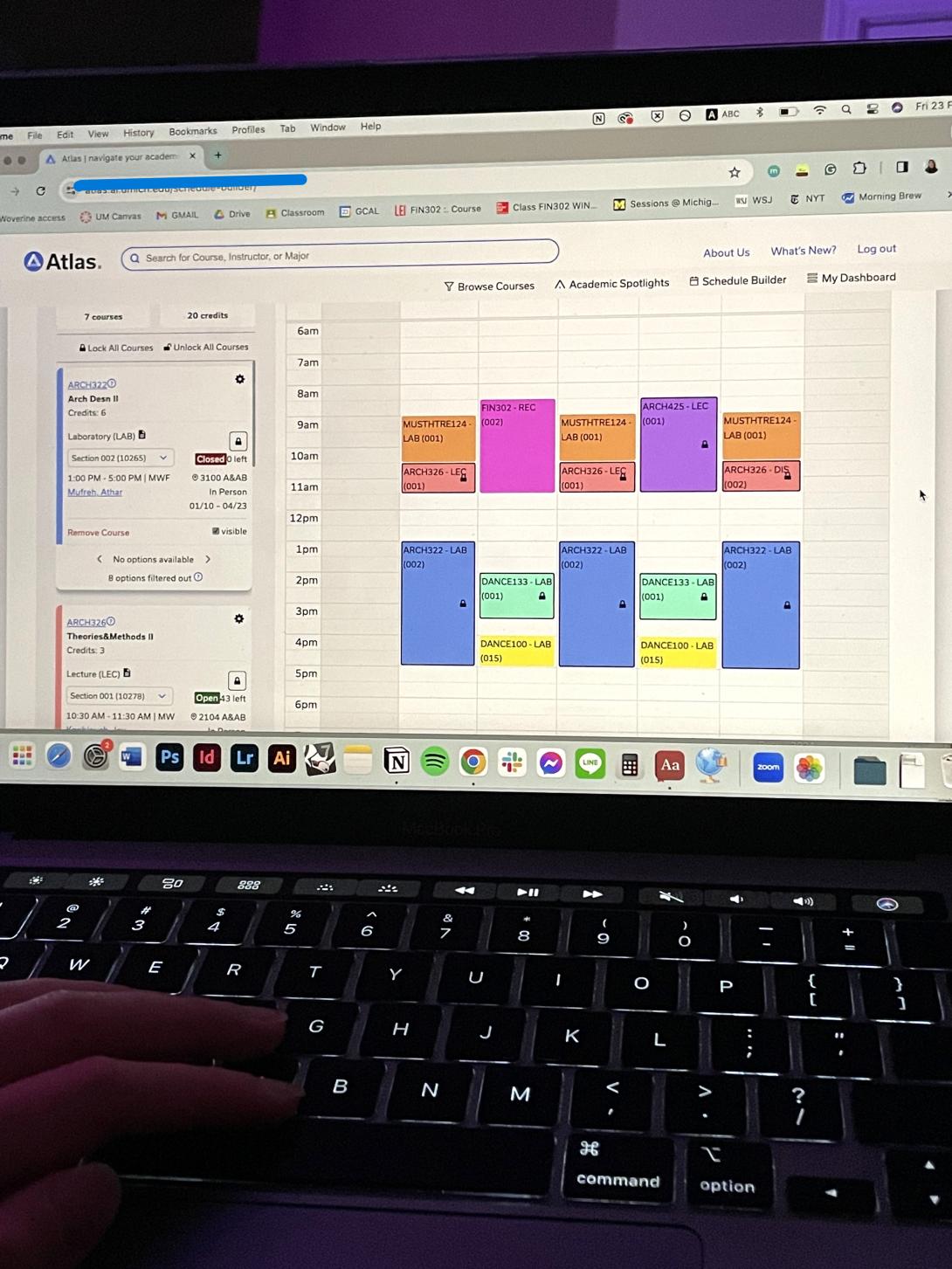Registering for Classes
For class selection, LSA course guide and Atlas (free to U-M students) are the two most useful resources, in browsing for classes. The LSA course guide lists U-M courses with details like class number, location, credits, descriptions, and professors. Atlas provides realistic statistics from previous students regarding workload, content, and professor preparedness. Additionally, Atlas offers a scheduling function, allowing easy comparison of multiple semester schedules. This feature has proven most useful in my experience. The PTD (progress to degree)planner/audit checklist on the LSA CG is super helpful. (It's on the right side of the screen, under "Stay on Track.") Also, I think flexibility in choosing is key—there are some "100% requirement" courses, but there is also a fair amount of latitude to take something totally new. I’ve heard seniors say they wished they’d had time to take this or that elective, out of intellectual interest.
Alternatively, if you are not in LSA, you can directly ask your academic advisors for major requirements and see which classes are offered each semester. Colleges like Ross, CoE, Taubman, and SMTD provide website descriptions of specific courses that are required. After the site is updated for the coming term or you have received your course list from your academic advisors, I recommend looking through Atlas for statistics that will help you make decisions.
Plan to have back-ups; it's not unusual to find a class full or waitlisted. If your class is waitlisted, consider contacting the instuctor, the department, or attending the first class without enrollment. People drop/add during the early part of the term and this show of interest may help you get permission to enroll.
Embarking on the journey of selecting classes can be both exhilarating and daunting. While the process may have its challenges, especially with classes filling up quickly, it is a fun experience browsing for courses of your interest! Remember to prioritize your graduation requirements while also making room for classes that genuinely spark your interest. One of our graduate ResNavs suggests planning out all four years or whatever amount of time you have left, highlighting required courses and classes necessary for your distribution. You can move these around, from terrm to term, to track your overall progress. With careful planning and the right resources at your disposal, you'll be well-equipped to craft a fulfilling academic journey at U-M.

